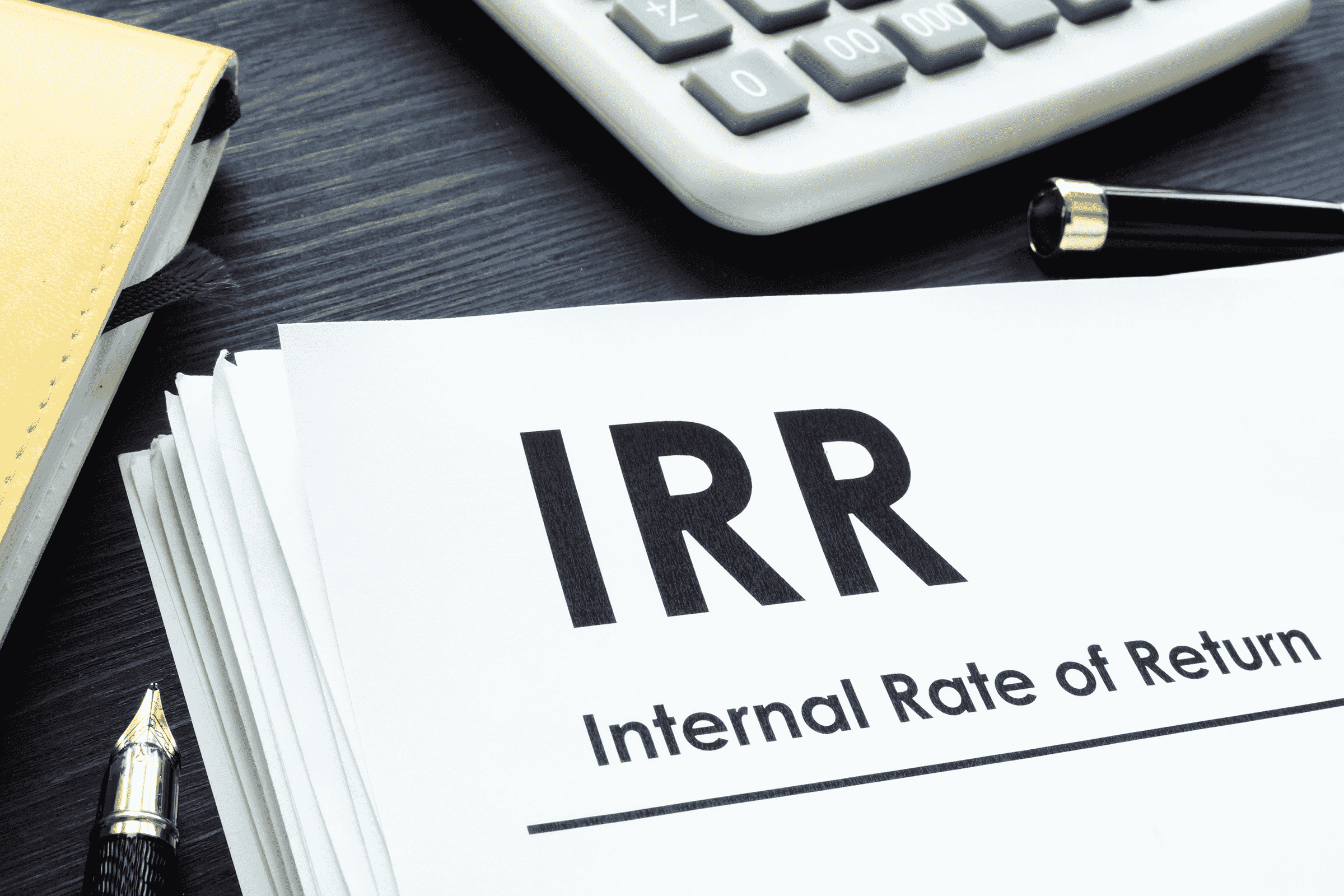What is the Internal Rate of Return and How is it Calculated?
The internal rate of return (IRR) is the most used calculation in private equity real estate investments. The IRR is a discount rate that causes the net present value (NPV) of all the cash flows throughout the investment to become equal to zero. It is often misunderstood as it has a complex formula (see figure 1).

Figure 1: The formula for internal rate of return where the time periods continue ad infinitum until all time periods throughout the investment are accounted.
The IRR formula can also be expressed in a cleaner form (see figure 2). It may have been a long time since you have seen the upper-case sigma (think about your college glory days), but don’t be too scared of it as this IRR formula cannot be calculated by hand. The IRR formula must be calculated using software such as Microsoft Excel and thankfully there is a handy function within Microsoft Excel for this calculation.

Figure 2: A cleaner expression of the internal rate of return formula. CF = cash flows’ I = initial investment.
Expressed as a discount rate, the IRR accounts for how long it takes for your money to be returned to you over time. While holding everything else constant, the longer it takes to return your money the IRR will continue to go down. In other words, the longer we hold onto your initial investment without returning money to you the lower the IRR.
Monthly Distributions Increase Your Overall IRR
Passive real estate investors need to understand and be aware of the liquidity and time value of their money. When you lock up your money in a long-term investment it is detrimental as it prevents you from being able to reinvest that money into other investments or, of course, use it for other personal uses. The internal rate of return formula takes all of this into account. This is one of the reasons why it is so important to invest in monthly cash flow investments like ours at PassiveInvesting.com. When you receive these monthly distributions, your returns end up being much greater as you can reinvest the monthly distributions in other investment vehicles which allows you to have a much higher overall return on your money.
Essentially, the higher the IRR the better the investment.
IRR vs Return-on-Investment (ROI)
To better understand the IRR calculation, let me paint a picture for you of a more common return calculation called the return-on-investment (ROI) calculation:
If I told you that I invested $100,000 into a multifamily project and received $300,000 back out of the investment, was this a good investment? Think about it for a second before reading further.
You likely thought to yourself, “Hmmm, yes, of course, that’s a 200% return on your initial investment. I tripled my money!”
However, I didn’t tell you the entire story here. I failed to mention that it took me 20 years to make this return. This investment ends up being only a 5.65% compound annualized return. The ROI calculation is flawed in that it doesn’t take into account the time value of the use of your money. It also doesn’t account for any time periods at which you received distributions throughout the investment period.
Never Rely on Just One Metric
At the end of the day, the IRR shown at the beginning of an investment is simply a projection of how the investment will perform. You should never rely on just one metric to determine the strength of the investment. There are many other factors to consider including the underwriting assumptions, market dynamics, sponsor track record, etc.
In future newsletters we will discuss additional factors in more detail such as various underwriting assumptions that you should be looking out for in your passive real estate investments.
If you have any further questions about the IRR and how it impacts your overall investment portfolio you can shoot me an email.

